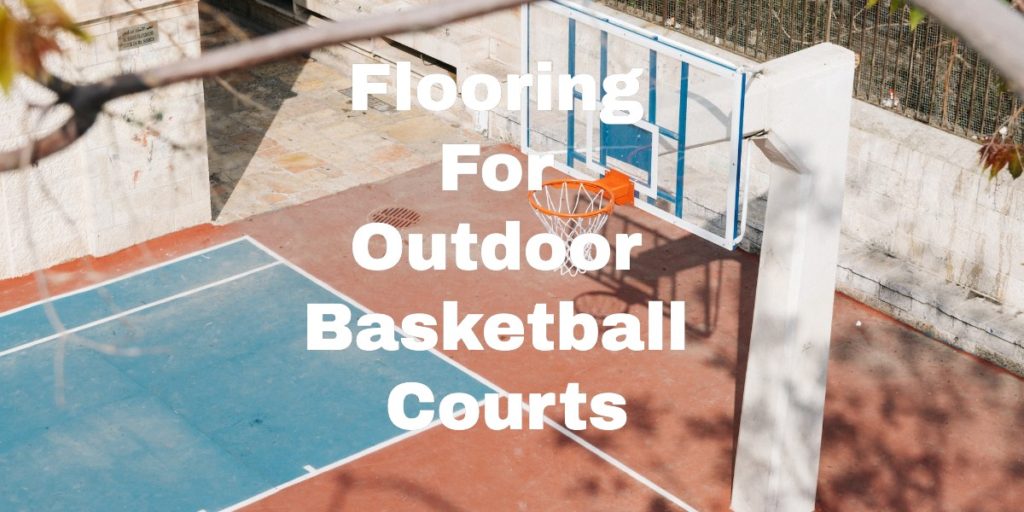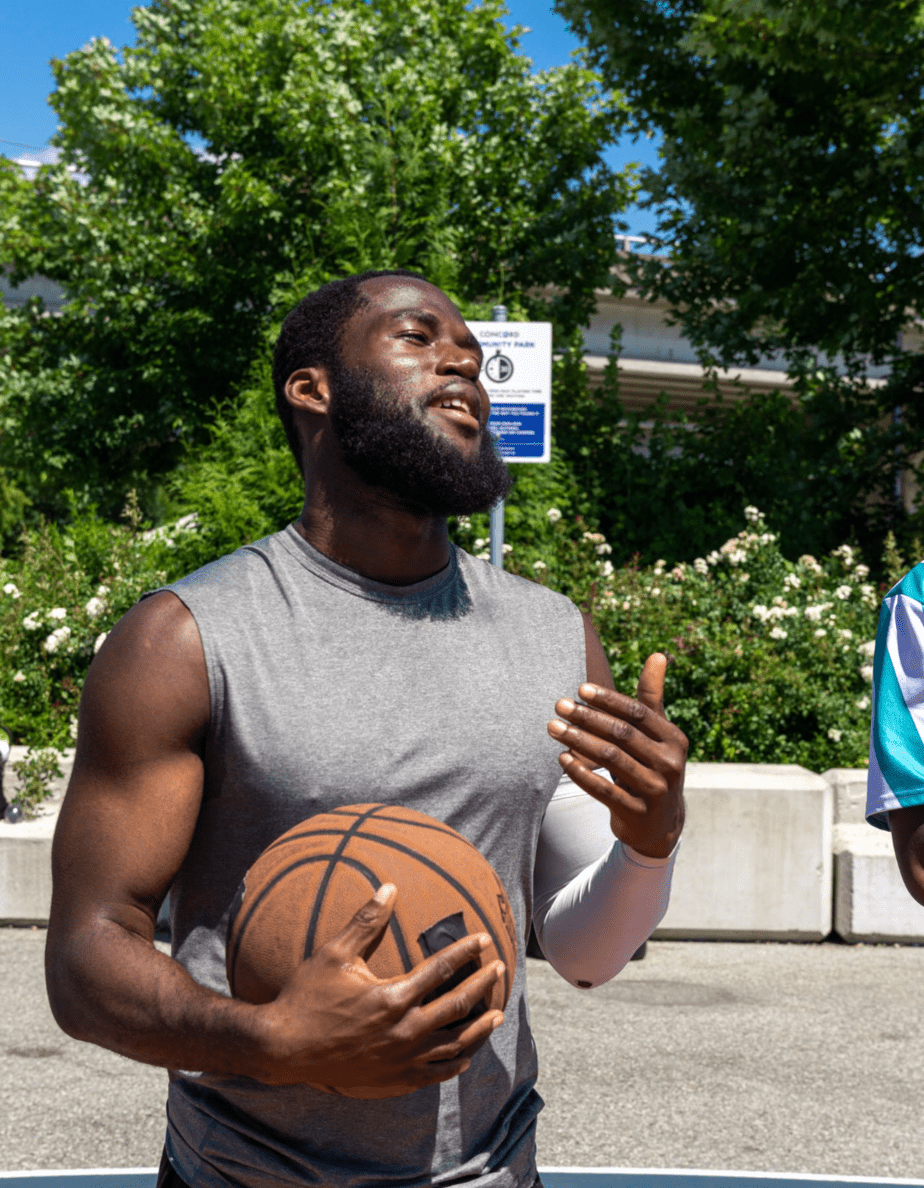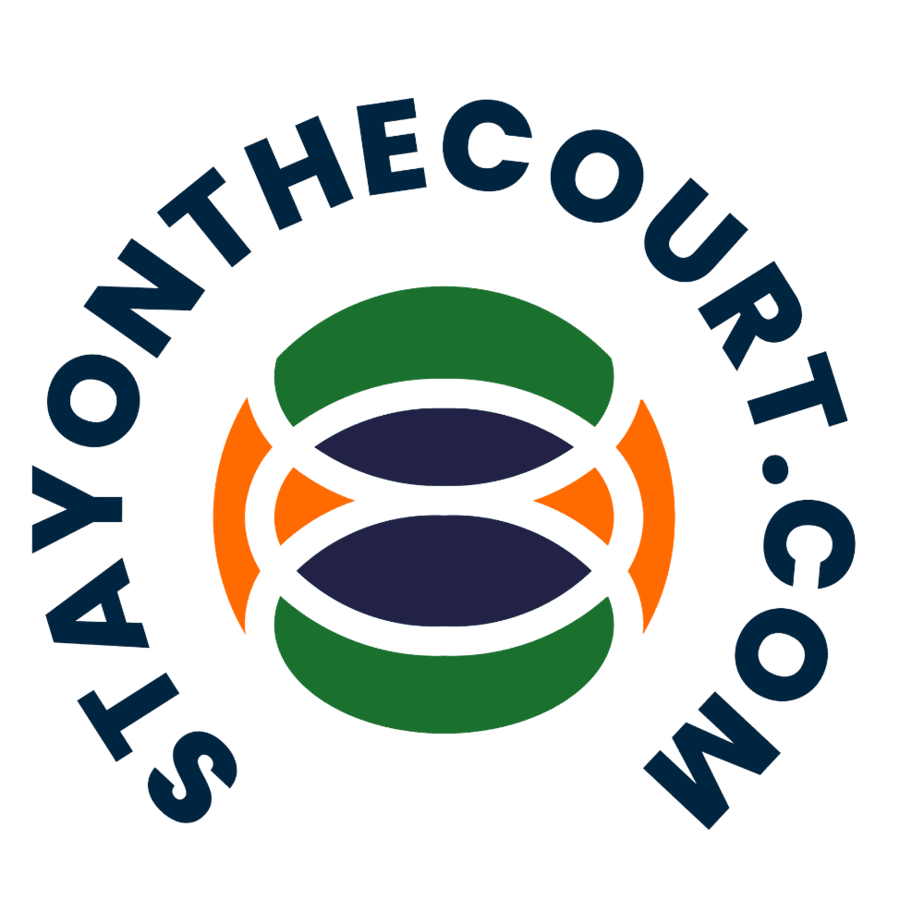Flooring for Outdoor Basketball Courts: Choosing the Right Surface for Your Game
Are you looking to build a basketball court in your backyard, or are you in charge of selecting a new surface for a community or school court? Choosing the right flooring for an outdoor basketball court can be a daunting task, but it doesn’t have to be. In this post, I will walk you through the factors to consider when selecting the perfect surface, as well as the pros and cons of each type of flooring. Here are the 3 things you will learn.
- Factors to consider when choosing flooring for an outdoor basketball court.
- The different options for basketball flooring materials.
- A video walk-through and example of the total cost of putting an outdoor ball court in your yard.
Unfortunately, our dreams of putting a sports court into our backyard were dashed because of the cost of moving the dirt in our backyard (we live on a lot with a slight incline up). You can see in the video at the bottom of the post that they had a nice flat surface and estimated their total cost at $12,100 for the entire project. But I hope you benefit from the hours of research I put into preparing for our project.

Factors to Consider When Choosing Flooring for Outdoor Basketball Courts
Before we dive into the types of flooring available for outdoor basketball courts, let’s first consider the factors that should guide your decision.
Weather and Climate
If you live in a region with harsh weather, such as heavy rain or snow, you’ll want to choose flooring that can withstand the elements. If the court is likely to get wet, you’ll also want to consider a surface that provides good traction.
Level of Play
The level of play on your court should also guide your decision. A surface that’s suitable for casual pick-up games might not hold up under the intensity of serious games or tournaments. You’ll also want to consider the age range of the players who will use the court. A surface that’s too hard could be dangerous for young or inexperienced players.
Safety Considerations
Safety should always be a top priority when selecting flooring for an outdoor basketball court. Look for a surface that provides good shock absorption to reduce the risk of injury. You’ll also want to consider the presence of any obstacles or hazards near the court, such as trees or uneven ground.
Maintenance Requirements
All outdoor basketball court flooring will require some level of maintenance. However, some surfaces are easier to maintain than others. You’ll want to consider factors such as how often the surface needs to be cleaned, whether it requires sealing, and how easy it is to repair or replace any damaged sections.
Budget Constraints
Finally, you’ll want to consider your budget when selecting flooring for your outdoor basketball court. While some surfaces might offer superior performance or durability, they may also come with a higher price tag.
Types of Flooring for Outdoor Basketball Courts
Now that we’ve considered the factors that should guide your decision, let’s take a closer look at the types of flooring available for outdoor basketball courts.
Concrete
Concrete is a popular choice for outdoor basketball courts because it’s affordable and durable. It can also be customized with different colors and finishes. However, concrete surfaces can be hard on players’ joints and may not provide enough shock absorption. They also tend to be slippery when wet.
Asphalt
Like concrete, asphalt is a popular and affordable choice for outdoor basketball courts. It offers good traction and can be customized with different colors and finishes. However, it can be harder on players’ joints than on some other surfaces, and it may require frequent sealing to prevent cracks.
Rubber
Rubber flooring is a newer option for outdoor basketball courts. It offers excellent shock absorption and traction, making it a safe choice for players of all ages and skill levels. It’s also relatively easy to maintain and comes in a variety of colors and finishes. However, rubber flooring can be more expensive than other options, and it may not hold up as well under heavy use.
Modular Tiles
Modular tiles are a popular choice for indoor basketball courts but can also be used for outdoor courts. They offer excellent shock absorption, traction, and customization options. They’re also relatively easy to install and maintain. However, modular tiles can be more expensive than other options, and they may not be as durable as other surfaces under heavy use.
| Company | Description |
| ModuTile | ModuTile offers interlocking outdoor basketball court tiles that are designed for easy installation. Their tiles are made from high-impact polypropylene and are engineered to withstand heavy use and harsh weather conditions. They offer a variety of colors and patterns to choose from and can be customized to fit your specific needs. |
| VersaCourt | VersaCourt: VersaCourt offers customizable outdoor basketball court flooring solutions that include modular tiles. Their interlocking tile system is designed to provide good ball response and reduce joint stress. |
| Sport Court | Sport Court provides a range of outdoor basketball court flooring options, including modular tiles. Their tiles are made from high-impact copolymer and are designed to withstand heavy use and extreme weather conditions. |
| SnapSports | SnapSports offers a variety of outdoor basketball court flooring options, including modular tiles. Their tiles are designed for durability and are engineered for high-performance play. |
Artificial Turf
Finally, artificial turf is an option for outdoor basketball courts. While it might not be the first material that comes to mind, artificial turf offers many benefits. It’s durable, requires minimal maintenance, and provides excellent shock absorption. It’s also weather-resistant, which means it won’t get slippery when wet like other surfaces. However, it can be more expensive than other options, and it may not offer the same level of traction as some other surfaces.
Making Your Flooring Decision for Outdoor Basketball Courts
So, which type of flooring is right for your outdoor basketball court? The answer will depend on your unique needs and preferences. However, I can offer some guidance based on my research.
If you’re looking for a budget-friendly option that’s also customizable, concrete or asphalt might be a good choice. However, keep in mind that these surfaces can be hard on players’ joints and may not provide enough shock absorption.
If safety is your top priority, rubber flooring or modular tiles are excellent choices. They offer superior shock absorption and traction, which can help reduce the risk of injuries. They’re also relatively easy to maintain and come in a variety of colors and finishes.
If you’re looking for a low-maintenance option that’s weather-resistant, artificial turf might be the right choice. It’s durable, requires little upkeep, and won’t get slippery when wet.
When making your decision, don’t forget to consider the level of play on your court, as well as your budget constraints. You may also want to consult with a professional who can help you assess your needs and recommend the right surface for your court.
A Video Walk Through On Building An Exterior Basketball Court
This video does a good job of walking through the process of deciding what exterior basketball court flooring to use as well as the costs. The intro music is loud but the voice of the narrator is a little quiet, so you may have to turn up the volume when he starts talking.
Conclusion
In conclusion, choosing the right flooring for your outdoor basketball court is an important decision that requires careful consideration. Whether you opt for concrete, asphalt, rubber flooring, modular tiles, or artificial turf, each surface comes with its own set of pros and cons. By considering factors such as weather and climate, level of play, safety considerations, maintenance requirements, and budget constraints, you can make an informed decision that will provide a safe and enjoyable playing experience for years to come.
So, get ready to shoot some hoops, have some fun, and remember to take care of your court. If you want to make your existing driveway or concrete pad into an outdoor basketball court take a look at our article on basketball court stencil kits. We also have a guide on portable basketball hoops to put on your new court.
Troy Wallace
Troy Wallace is Certified Basketball Speed Specialist and shares his experiences in trying to stay as healthy as possible to stay on the court. He is active in coaching youth basketball in YMCA, Team Work Sports Nebraska, and, currently, in the Jr. Warriors program in Omaha, NE. Visit Troy's Full Author Bio Page or email him directly.
Meaningful conversations happening daily about training, recovery, and injury-specific rehabilitation as well as sport-specific discussions on playing, coaching and refereeing your favorite sport. We welcome experts and those with curious minds seeking answers.
Join The Stay On The Court Community!